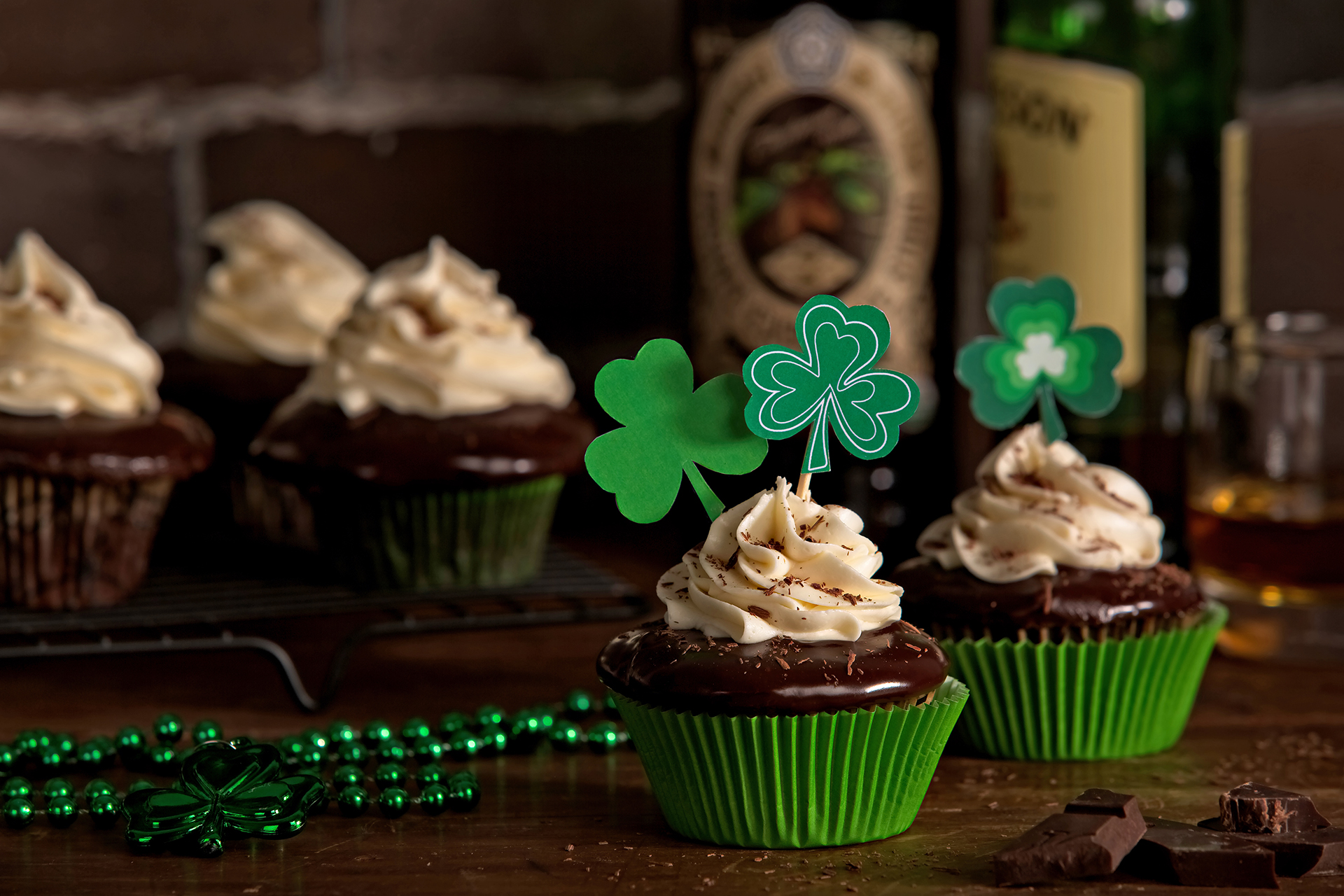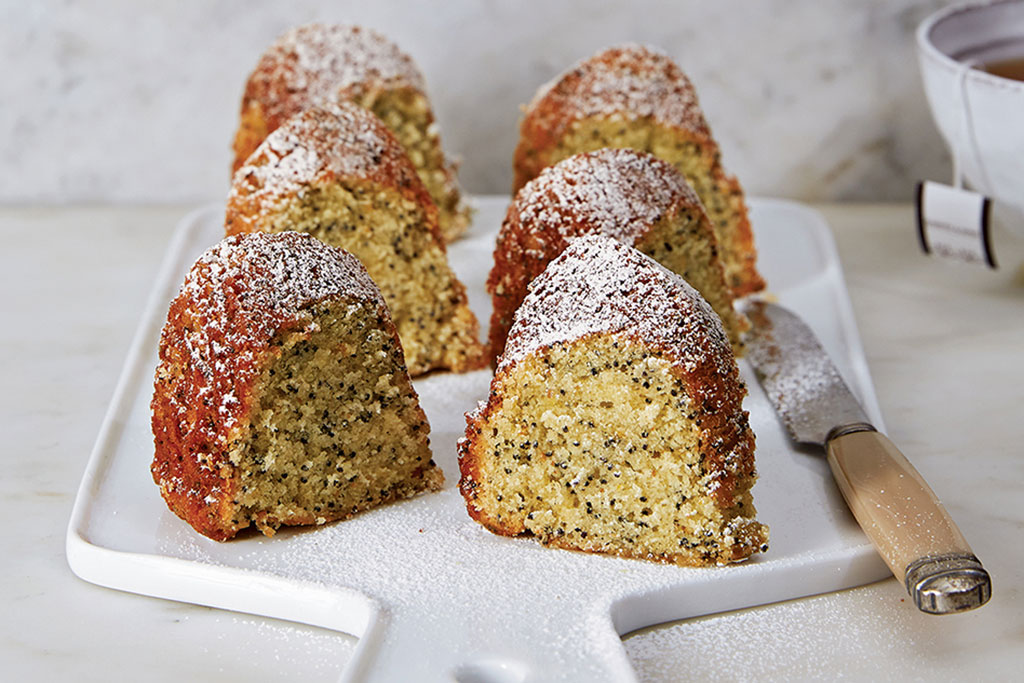Latest News
Keep on top with latest and exclusive updates from our blog on the Los Angeles real estate world. Lauren Rocco posts about tips and trends for buyers, sellers, and investors every week. Whether it be about staging your property or a snapshot of the market, this is your one stop shop.

There’s something about the 4th of July that just feels like home. Maybe it’s the smell of burgers on the grill, the sound of laughter spilling from backyards, or the sight of fireworks lighting up the lake. Around here, it’s more than just a holiday ... it’s a reminder of what makes Lake Norman such a special place to live. As a local agent (and big fan of hot dogs, front porches, and boat parades), I’ve come to realize that real estate isn’t just about buying and selling homes. It’s about building a life. And there’s no better time to reflect on that than this week. Here’s what I love most about the 4th of July in Lake Norman: Backyard cookouts where neighbors become lifelong friends Lakefront views that make every night feel like a vacation Small-town parades and fireworks shows that never get old The way the whole community feels like one big family If you’re looking for a place that gives you that Americana feeling year-round, Lake Norman delivers. Whether you’re boating with family, grilling on the patio, or just watching the sunset with a cold drink in hand—this area was made for making memories. Thinking about a move? There’s still time to find a place you can call home before summer winds down. From charming homes in quiet neighborhoods to lakefront retreats perfect for hosting next year’s July 4th BBQ, I’d love to help you find your spot. Let's make this summer one to remember. Happy 4th of July! - Lauren
Read more
There’s no drink more appropriate for St. Patrick’s Day than a rich, dark stout. And this dessert brings that deep chocolatey flavor (plus a touch of Irish cream) together in perfect harmony. Ingredients: For the cupcakes 1 cup stout beer (chocolate stout, if you prefer) ¾ cup cocoa powder 1 stick butter 2 cups sugar 2 eggs ½ teaspoon salt 2 cups flour 2 teaspoons baking soda 1 cup buttermilk 1 teaspoon vanilla Ingredients: For the frosting ½ cup unsalted butter, room temperature 4 cups powdered sugar, sifted ¼ cup Irish Whiskey 1 teaspoon vanilla Ingredients: For the ganache 3 tablespoons corn syrup 3 ounces heavy cream 3 ounces of Irish cream 12 ounces dark chocolate chips ½ teaspoon vanilla Instructions: Preheat the oven to 350°F. Prepare the cupcake batter by melting the stick of butter in a small saucepan. Add in the stout, and bring to a simmer. While the butter and stout mixture is heating, beat the sugar and eggs together in a bowl, and slowly add in the flour and salt. In a small bowl, combine the baking soda and buttermilk. Add into the cupcake batter over a strainer, and mix thoroughly. Add in the vanilla, and stir. When the stout and butter mixture comes to a simmer, stir in the cocoa powder until well-mixed, and slowly strain the liquid into the cupcake batter. Stir until just combined. Prepare a cupcake tin with liners, and fill each cup ¼ of the way with batter. Bake the cupcakes for 15–20 minutes. While the cupcakes are baking, prepare the Irish cream frosting by whipping the butter until light a fluffy. Slowly beat in the powdered sugar on low speed until incorporated, and increase speed to medium-high. Add in the vanilla, followed by the whiskey, and continue to mix. Add more whiskey a tablespoon at a time until the frosting is loose and fluffy. Place the frosting in a piping bag, and set aside. Once the cupcakes are done baking, place in the refrigerator to cool. Prepare the ganache by bringing the corn syrup, Bailey’s, and heavy cream to a simmer in a small pot. Add in the chocolate, and stir until smooth. Remove from the heat, and mix in the vanilla. When the cupcakes have cooled, dip the tops into the ganache, and swirl above the bowl to allow the excess to drip. Once the ganache has set, pipe the frosting onto each cupcake, and top with the printable shamrock decorations! Printable Clover Cupcake Toppers
Read more
Poppy seed cake is often made with too much lemon and a sticky, overly sweet glaze. Try my take on this old favorite. If desired, substitute lemon, lime, clementine, or tangerine zest and juice for the orange. Serve with candied orange peel on the side. Makes one 5-inch bundt cake (serves 4) Ingredients: 2 tbsp. unsalted butter, plus more for the pan ½ c. granulated sugar Finely grated zest of ¼ orange 1 large egg ¼ c. heavy cream 1 tsp. freshly squeezed orange juice ½ tsp. pure vanilla extract 2 tbsp. poppy seeds ½ c. all-purpose flour ½ tsp. baking powder Pinch of salt Confectioners’ sugar, for dusting Instructions: Preheat the oven to 350°F. Butter one 5-inch well of a Bundt quartet pan, and set aside. In the bowl of a stand mixer fitted with the paddle attachment, cream the remaining 2 tablespoons butter and the granulated sugar. Add the orange zest and egg and beat until combined, then add the cream, orange juice, and vanilla and beat to combine. Add the poppy seeds and mix until incorporated. Add the flour, baking powder, and salt and mix just until combined. Scrape into the prepared pan and bake until the edges start to brown and the cake is set, about 35 minutes. Cool for 10 minutes in the pan, then remove the cake from the hot pan and allow to cool completely on a wire rack. Dust with confectioners’ sugar before serving. Excerpted from Sweet Little Cakes from Mrs. Zabar’s Bakeshop: Perfect Desserts for Sharing. © 2023 Tracey Zabar. Photography by Ellen Silverman. Used with permission of Rizzoli New York.
Read more
Harissa is a North African condiment made with savory spices, spicy peppers, and loads of garlic. A deliciously irresistible, spicy and smoky spread that pairs perfectly with grilled steak! Ingredients: For the harissa ½ tablespoon red pepper flakes 6 garlic cloves, minced 1 teaspoon caraway seeds, crushed 1 teaspoon ground cumin 1 tablespoon smoked paprika ½ tablespoon ancho chili powder 1 teaspoon salt 1 lemon, juiced 2 tablespoon olive oil 2 tablespoons tomato paste Ingredients: For the beef 1 pound flank steak 1 bunch of cilantro Cucumbers, sliced Plain yogurt Pickled red onions Instructions In a food processor, puree pepper flakes, garlic, caraway seeds, cumin, paprika, chili powder, salt, lemon juice, olive oil, and tomato paste until smooth and blended. Rub flank steak generously with harissa, leaving a little to baste while grilling. Refrigerate steak until ready to grill. Preheat grill to medium high. Grill steak for 8 minutes, flipping halfway through. Let steak rest for 5 minutes before slicing. Serve with cilantro, cucumbers, yogurt, and pickled red onions. Tip: Harissa will last for a month, refrigerated. Double this recipe to spice up chicken, sandwiches, veggies—you name it!
Read more
There were many trending topics from last year—some we’re all glad to see in our rearview mirror and others we’re happily still embracing today. One of the latter is the charcuterie board: a spread of meats, cheeses, fruits, nuts, jams, and crackers that’s as delicious as it is elegant. But building your own showstopping board can be an overwhelming task if you don’t know where to start. This comprehensive how-to is here to guide you. The Basics First, if you don’t already have a serving piece for this appetizer, here are some great options depending on your personal taste and kitchen style. For a rustic look, West Elm’s Olive Wood Rustic Cutting Board is an ideal option, and for the modern homeowner, Anthropologie’s Agate Cheese Board offers a more contemporary appearance. CB2’s White Square Slate Cheese Board is another ideal choice for the minimalist, or opt for the Crate and Barrel Hayes Marble Serving Board with Handles if you want a dramatic look. However, if you don’t want to buy something new, any flat, large cutting board, slab, or plate will work. Other miscellaneous items to consider getting are a set of cheese knives—which usually come in a set of three or four—and appetizer forks and spoons; but, as with the board, you can use the utensils you already have. Just be sure to put out enough for slicing everything on the board, as well as enough for everyone to serve themselves. Small bowls are also needed for a variety of olives, dips, jams, and the like. The Cheeses The most essential part of any charcuterie board is the cheese selection. Whether you’re crafting the spread for just you and your significant other or for a small gathering, it’s important to purchase high-quality cheeses of varying hardness and softness. (You don’t need gourmet crackers, but you should go for gourmet cheese.) Harder cheeses can be presliced, while those that are crumbly or spreadable should be put on the board as a block with their own knives. Start with strong foundational cheeses that are established fan favorites, such as white cheddar, Gouda, and provolone. Include softer, spreadable varieties like brie and burrata. Don’t forget those under the crumbly category, including goat and blue cheeses. The Meats Whether sliced thin and stacked, folded, or put out as a whole roll, cured meats are a charcuterie board staple (as cuit means “cooked” in French). Salty options like prosciutto, capicola (both of Italian origin), or jamón (of Spanish origin)—all of which are cured, air-dried pork—will pair nicely with most cheeses. Include options on the sweeter or spicier side, such as salami, sopressata (Italian salami), and pepperoni. Put out a smoked meat for the adventurous eaters, too, like sausage or ham. The Accents Arguably, the most fun part of shopping for your spread is picking out all of the “extras”—foods of different textures and flavors that complement meat and cheese well. Include pickled accompaniments, such as actual pickles, as well as other pickled veggies lioke cauliflower, carrots, celery, bell peppers, and peperoncino (Italian chili peppers). Olives and capers, although not technically pickled, add a similar vinegary flavor to the board. Most boards will be heavy on the saltiness, so it’s important to offer sweet accents, such as a variety of fruit. Incorporate apple and orange slices, berries, and grapes, as well as dried fruit, such as prunes, apricots, cranberries, and cherries. It’s nice to include an element that can be easily picked at, like Pistachios, almonds, and pecans are sound choices. Play around with different types of jams, mustards, chutneys, preserves, and dips. You don’t want to overwhelm the board with too many options, so two to three will suffice. Consider a combination like a coarsely ground, spicy mustard with a sweet apricot jam. Vegetarians would appreciate a hummus or bean dip option as well! The bread and crackers Now it’s time to put all of those delicacies on something. Since you want the items above to really shine, choose plain crackers and bread instead of flavored varieties. Artisan bread, toasted baguettes, and thin grain crackers will go best with your spread. The Assembly When you see an image of a charcuterie board, most look like they were put together by a professional food stylist, but assembling your own is actually easier than you think. Start by placing the large food items on the board. This will include some of the cheese and meat selections. It may also include the bread, depending on what kind you chose. Next, arrange your bowls of jam, dip, etc. Then, neatly add anything that’s sliced, rolled, or folded. After the bigger items are placed, finish your board by filling up any negative space with the accents, including the crackers. It doesn’t have to be perfect. Elements like grapes, nuts, and dried fruit could be in a bowl, but they could also be scattered about—how free-form you want the arrangement to look is up to you. Add sprigs of rosemary or other herbs for a final stylish touch. Following this guide is sure to result in one epic charcuterie board! Download these charcuterie board labels to add an elegant finishing touch to your spread!
Read more
People naturally make positive associations between happiness and food. This seems to be especially true during certain holidays: for example, we start pining for foods like pumpkin and turkey in autumn and peppermint and cranberry during the winter holidays. And then there’s chocolate, our constant companion at most holidays—or any time of year, for that matter. In fact, this was true even during one of the most challenging years in memory. Amid a pandemic, chocolate sales increased by 4.2 percent in 2020, according to the National Confectioners Association’s 2021 State of Treating report. Since we are in the middle of peak chocolate-buying season, let’s take a look at why this sweet (and sometime bitter) treat has captured so many hearts and palates throughout much of human existence and how, yes, it can be good for us. A treat timeline The first known documentation of chocolate being created is from thousands of years ago in Mesoamerica, the native home of the cacao tree. Mayans not only consumed it as a drink but also used it in ceremonies. The Aztecs drank it as well, and their ruler, Montezuma II, was notorious for consuming it regularly. They also used the beans as a form of currency, even rewarding their soldiers with it. In the early sixteenth century, Spanish explorers brought the chocolate drink home, where it became a hit with the upper classes in Spain and then throughout Europe. When Amsterdam’s Coenraad Johannes van Houten perfected the cocoa press, which created cocoa powder, in 1828, it revolutionized the drink, making it more easily accessible to the masses. It also led to the creation of chocolate bars, milk chocolate, and the first mass-producing chocolatiers later in the nineteenth century. Fast-forward to today, and it’s become a $100 billion industry worldwide. A complete sensory experience On a basic level, we tend to be more attracted to things that stimulate our senses, and chocolate checks off most boxes on that front. It tastes great, of course, but its aroma can also be intoxicating. (Think of freshly baked chocolate chip cookies.) Interestingly enough, when they’re being fermented, cocoa beans can also have various other aromas and flavors, including cheesy, floral, and fruity. Visually, chocolate can be shaped into any number of uplifting images, from bunnies to hearts to coins; additionally, it can boast an array of colors and is often wrapped in shiny foils to make it even more attractive. Finally, with a melting point of 93 degrees F°, it’s one of the few foods that actually melts in your mouth—just a finishing touch to a thoroughly enjoyable food experience. Be choosy about your chocolate Of course, just because something tastes good, smells good, and looks good, that doesn’t mean it’s actually good for you. And chocolate is no exception, both in terms of health and production. But if you choose wisely, the benefits can be tremendous. Health reasons Let’s start with the bad aspects of chocolate, most of which are probably already understood. Chocolate tends to be quite sugary, which helps to explain why we can crave it, and it’s high in calories. Also be wary of the caffeine content. Although it may not give you the same jolt as a cup of coffee, a soda, or an energy drink, it can still pack a caffeinated punch—most notably dark chocolate. However, that same dark chocolate is where you’ll find many of the food’s health benefits. The primary difference between dark chocolate and milk chocolate is that the former contains at least 50 percent cocoa solids, whereas the latter only needs a minimum of 10 percent to earn its name. White chocolate contains no cocoa solids, so it’s technically not even chocolate! Yes, chocolate has a lot of saturated fat, but the less processed it is, the better—and dark chocolate mostly consists of healthier fats that aren’t believed to raise cholesterol. In fact, dark chocolate consumption has been linked to lower cholesterol levels. Nutritionally, dark chocolate contains a good amount fiber and of minerals like copper, iron, magnesium, and zinc. Research indicates that dark chocolate has antioxidant properties since it’s rich in flavanols, which have been connected with decreased inflammation and better blood flow, blood pressure, and overall heart health. That same improved blood flow can help your brain, which is why dark chocolate is also associated with improved mood and reduced stress. Flavanols are also associated with better insulin resistance, which may help people with diabetes. Plus, the darker it is, the less sugar it contains. So should you ditch fruits and vegetables for lots of dark chocolate? Of course not. As mentioned earlier, it can still be high in calories and caffeine. But if you limit yourself to a small piece or two a few times week, and opt for a cocoa content of 70 percent or higher, you can maximize the health benefits while minimizing the downsides. Ethical reasons Making chocolate is a time-consuming process from start to finish, per the National Confectioners Association. It starts with cocoa trees, which produce pods with cocoa beans after four to five years; each pod has approximately forty beans. Overall, a cocoa tree will produce approximately 2,500 beans in its lifetime. After all that nurturing, it takes around 400 cocoa beans to make a single pound of chocolate. The vast majority of the world’s cocoa beans—around 70 percent—are harvested by hand on approximately 1.5 million small, family-owned farms in West Africa. In recent years, a number of companies have prioritized and promoted fair trade to help these workers. If you want to feel as good about your chocolate as it makes you feel, simply look for the Fair Trade logo on the packaging.
Read more
Skip the box of chocolates and try this deliciously rich and tart chocolate cherry bread. Your loved one will appreciate the extra effort—little do they know it’s super simple to make! This dessert also makes for the perfect gift you can give to friends and family all season long. Ingredients 2 (10 ounce) bags frozen pitted cherries, thawed 1 cup sugar ½ cup sour cream 3 large eggs 1¾ cup flour ½ cup unsweetened cocoa powder 1½ teaspoon baking powder ¼ teaspoon baking soda ½ teaspoon salt 6 tbsp. butter, melted ½ cup chocolate chips ½ tablespoon margarine Instructions: Mix one bag of the whole cherries and sugar in a medium saucepan, and crush the cherries with a fork or spoon. Cook over medium heat for 15 minutes, stirring occasionally. Transfer to a separate bowl, and let cool. Once cooled, mix in the sour cream and eggs. In a medium bowl, combine the flour, cocoa powder, baking powder, baking soda, and salt; combine with the cherry mixture. Preheat oven to 350°F. Grease 9-inch loaf pan with shortening or butter. Finely chop the cherries from the second bag, and into the batter. Slowly stir in the butter, and pour into the loaf pan. Bake for 50-60 minutes, or until a toothpick inserted in center comes out clean. Keep in pan for 15 minutes to cool, and then remove to rack to cool completely. To make the chocolate glaze, melt the chocolate chips on the stove-top or microwave them in 30-second increments. Add the margarine, and stir until melted and blended. Drizzle glaze over loaf.
Read more
Bacon goes well with just about anything—with a side of pancakes, in a sandwich, or even dipped in chocolate. But have you ever thought about putting it in a holiday dessert? The notes of maple and walnut in this pie make bacon the perfect accompaniment, and give it a distinct sweet and salty flavor. Ingredients: For the crust 4 ounces of thin-cut bacon slices 5 tablespoons of solid vegetable shortening 1 cup of all-purpose flour 2 tablespoons of very cold water ½ teaspoon of apple cider vinegar Ingredients: For the filling 3 large eggs 1 cup of maple syrup (grade B or 2) ½ cup of granulated white sugar ½ cup of packed dark brown sugar 1 tablespoon of pure vanilla extract 2 cups of chopped walnuts Instructions: The crust First, fry up the bacon in a skillet on medium heat until crisp (about 3-4 minutes). Transfer to a paper towel. Save 2 tablespoons of bacon fat from the pan, and measure the rest of the leftover fat in a heat-safe measuring cup. Let cool for 10 minutes. Add in enough shortening so the total volume is 6 tablespoons (¼ cup plus 2 tablespoons). Pour flour into a bowl and add the fat from the measuring cup, cutting it in with a pastry cutter or fork until it resembles coarse cornmeal. Mix together 2 tablespoons of cold water and the vinegar and add to flour mixture until a soft, non-sticky dough forms. Form the dough into a ball, dust with flour, and roll into an 11-inch circle. Place a pie plate in the center and trim the edges. The filling Beat together the eggs, maple syrup, sugars, and vanilla extract into a bowl with an electric mixer, at medium speed. Mix in the reserved 2 tablespoons of bacon fat. Crumble the bacon into small pieces in the bowl. Stir in walnuts until incorporated and pour into the pie crust. Bake at 350 degrees, until puffy and brown (about 55 minutes). There should only be a slight jiggle in the center. Let cool before slicing. Note: Store this pie tightly sealed in plastic wrap in the fridge for up to 2 days. Recipes reprinted from A la Mode: 120 Recipes in 60 Pairings. For more delicious holiday pie recipes, pick up your own copy of A la Mode: 120 Recipes in 60 Pairings: Pies, Tarts, Cakes, Crisps, and More Topped with Ice Cream, Gelato, Frozen Custard, and More on Amazon.com.
Read more
Fresh diploma in hand and wondering where to plant your post-college roots without selling a kidney for rent? Realtor.com’s latest report has your back, highlighting the top 10 U.S. cities where recent grads can find affordable rentals, promising job markets, and vibrant lifestyles. Top 10 Rental Markets for Recent College Graduates in 2025: Austin, TX – With a rent-to-income ratio of just 18.9%, Austin tops the list. It’s a tech hub with a live music heart, making it perfect for work and play. Raleigh, NC – Boasting the highest share (30.4%) of recent grad-friendly jobs, Raleigh offers a balanced lifestyle and strong job market. Overland Park, KS – Enjoy the shortest average commute time of 22 minutes and a high rental vacancy rate—translation: options and breathing room. Minneapolis, MN – Rent-to-income ratio of 19.7% and a solid peer group of other recent grads (6.3%) makes this city both smart and social. Richmond, VA – Low unemployment (3.3%) and a creative community vibe? Yes, please. Scottsdale, AZ – High job openings index and short commute times make Scottsdale both opportunistic and efficient. Pittsburgh, PA – A vibrant college town feel that sticks around after graduation—with a location score of 4.8 to prove it. Richardson, TX – A rising star near Dallas, great for careers in tech, healthcare, and finance. Atlanta, GA – With the highest location score (4.9) and a high vacancy rate, it’s a smart and soulful pick. Charlotte, NC – Okay, it’s not officially on the list, but you know I had to plug Queen City. It’s growing fast, and the opportunity here is real. So, What Now? If you’re eyeing one of these cities but don’t know where to start, good news: we’ve got trusted real estate connections in all of them. Whether you’re renting short-term or laying roots for a longer stay, we can plug you in with local pros who get it. 📞 Lauren Rocco 📍 EXP Realty 📱 704-900-9140
Read more
TOTAL Bananas. You’ve probably noticed it, rates are up, down, and back again before you can even call your lender for the scoop! Just me? Ha. Man, who can keep up? We had a stable March, but April and May? TOTAL Bananas. And it’s enough to make even serious buyers pause. But here’s the deal: if you’re trying to “time” this market perfectly you may be here awhile. You can’t control the rates, but that doesn’t mean you’re powerless. Here’s what you can do to get the best rate possible right now! Boost Your Credit Score Even a 20-point difference can impact your monthly payment. Improving your credit doesn't have to take forever and just a little effort now could save you thousands over the life of your loan. The better your score, the better your deal, period (If you’re not sure where you stand, I know a great lender who can give you a game plan). Pick the Right Loan Type Not all loans are created equal. FHA, VA, USDA, conventional-each come with different perks. And the rates can vary a lot depending on what's best for your financial picture as a whole. Work with a professional who takes time to explain your options in plain English. Be Strategic About Your Loan Term Going with a 15-year vs. a 30-year loan might shift your rate and payment big time. Your lender should walk you through all the options, not just push one product. Sometimes the "cheapest" monthly payment isn't actually the smartest long-term move-it all depends on your goals. Let me know if you’d like someone to lay it out for you. I always say this... focus on what you can control, and build your home buying strategy around that. And while mortgage rates are super moody, the market itself is still moving! Here’s what’s happening right here in our backyard. In Cornelius the average home price is $546K, up 6% from last year. But don't let that number scare you. There are great opportunities under $400K that you could totally snag this summer. Yes, it's still a seller's market. But don't let that intimidate you. We're not seeing the wild bidding wars of the past (unless a home is seriously underpriced). And even then, I've got a few smart strategies to help you stand out and stay competitive without overpaying. The average days on market is 42 days, so while homes are taking a tad longer to sell, it's pretty consistent with 2024. As homes sit longer, sellers can become a little antsy and more likely to negotiate. Bottom line-rates are doing their rollercoaster thing, prices are holding steady, and buyers? You've got more power than you think. The key is knowing how to move smart, not just fast. With the right plan (and the right people in your corner), you can get a great home at a great rate, even in a market that feels like it's had one too many espressos. Whether you're just starting to peek at listings or you're ready to make moves this summer, I've got your back. Let's talk strategy, timelines, and how to make this wild market work for you, not against you. Because honestly? Buying a home doesn't have to feel bananas.
Read more

